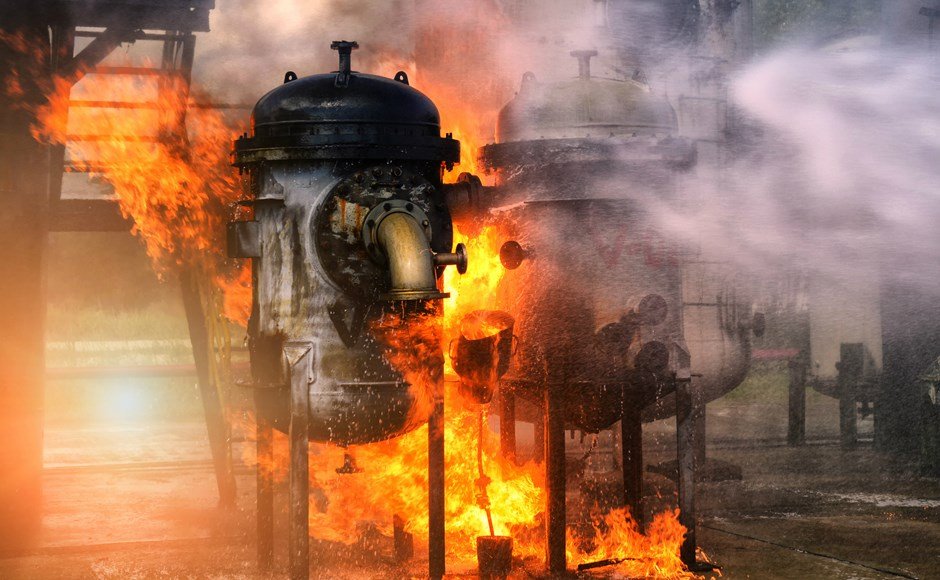Disasters can happen in the blink of an eye. Whether natural, environmental or just some freak accident, how your business responds to these occurrences can be the difference between successful risk mitigation and risk nightmares.

Unfortunately, for many organizations, natural disasters are often overlooked, pushed aside from the more every day, common workplace incidents. But as the recent Hawaii volcanic eruptions, Hurricane Harvey and even the 2014 Atlanta “Snowmageddon” showed us, businesses must always expect the unexpected.
What exactly does this mean? Simply put, businesses must take the time to proactively identify the potential risks they can face and develop remediation strategies to address these risks. These plans must go beyond the typical workplace incidents, focusing instead on the unique disasters that can potentially arise in their location(s) and how to ensure their ongoing success both before and after these disasters.
How is this accomplished? From my experience, developing comprehensive plans requires addressing three key components: employees, infrastructure and business continuity.
Worker Safety Should be Your Top Priority
Mitigating corporate risk during disasters starts with remembering that your employees are your most important asset. When disaster strikes, business owners must take measures to ensure employees are safe, which often means extending risk strategies beyond the office walls.
Before disasters occur, teams should ensure that they have appropriate preparation programs in place. These can include dismissal programs that allow their employees to safely and efficiently prepare for the incoming disasters, remote work environment capabilities and even extended absence plans to account for the disaster aftermath. Plans must be developed for both anticipated and unanticipated disasters, allowing teams to act swiftly and efficiently.
After the disaster occurs, teams must also recognize the well-being of their employees. While we often hope for the best, the reality that employees could be facing damaged or destroyed homes, personal injuries or even the loss of loved ones. Additionally, non-weather related disasters such as fires, earthquakes or volcanic eruptions can cause hazardous conditions at your physical location or even road closures, making it difficult or unsafe to get to work. Properly developed risk strategies must take into account their employee well-being to ensure they do what they can to take care of their employees until they are willing and able to return to work.
Remember, invest in your employees, and they will invest in you.
Lastly, don’t forget your vendors. While not directly your employees, they remain a vital part of your operations. Whether your vendors are local or miles away in another state or country, you want to be aware of how disasters affect them as well.
Vendor disaster risk management strategies should include plans to combat their unique environmental vulnerabilities – ensuring that their physical operations are compliant – and diversion strategies to maintain efficiencies and production.
Remember, while your operations may not be in a disaster area, your vendors’ might. Thus, teams must always be thinking ahead and have back-up plans in place should your vendors’ operations stall.
Look at Your Business Infrastructure Both Pre and Post Disaster
While employee safety remains the top priority, proper disaster risk management strategies must also account for protecting the business infrastructure. Specifically, risk teams must examine all potential disastrous events that could occur and develop preemptive strategies to combat these situations and ensure remediation strategies are in place. A few questions to ask yourself include: is your building and operations prepared for pop up threats like tornadoes as well as more forecasted disasters like hurricanes? Do you have access to the necessary equipment to complete your disaster preparations? Does your corporate insurance plan cover all appropriate disasters?
Following the disaster, ensure that your work environment is safe for continued operations. This includes examining all equipment within the building as well as the building structure itself. Risk nightmares can occur when employees come back to unsafe conditions, so team must work together to develop a comprehensive inspection checklist before employees are allowed back to the office.
If a disaster compromises your infrastructure, despite your strategically executed precautions, it is helpful to have a location already identified as your interim site during recovery. This will help your employees return to work quickly while avoiding any unnecessary hiccups in your business operations.
Ensure Continuity Plans Are Established
According to the Federal Emergency Management Agency (FEMA), 40 percent of businesses never reopen after a disaster. Without a disaster contingency plan built for continuity, your business is more susceptible to increasing that percentage.
Critical to ensuring business continuity is understanding the upstream impact of a disaster, specifically the effects on supply lines and inventory. To avoid interruptions in operations, risk teams should work to develop pre-event strategies to successfully redirect supply lines as well as identify potential emergency/back up vendors that could be available to offset any lost materials. These stopgaps can prove beneficial and allow for uninterrupted operations while working to re-establish your supply chain post disaster.
Lastly, team must recognize the importance of thinking long term with their strategies. While a natural disaster may only last a few days or weeks, this doesn’t mean that the damage ends with the storm. On the contrary, full damage evaluations and recover plans can take months and possibly even years to complete. Thus, continuity plans must be built to account for these extended recovery timeframes.
Your Plan is Established, Now Don’t Forget to Communicate It
Once your plans are built, it is important to be as proactive as possible in the communications of these plans. Though disasters move quickly, there are situations in which proactivity is possible. In the event of a hurricane, a disaster that is slightly foreseeable, it’s good practice to alert employees, vendors, customers and stakeholders about any potential shifts in operations as well as to inform them that you are prepared. When proactivity is not as feasible, as with more spontaneous disasters like earthquakes and fires, maintaining transparency and responsiveness matters. Once employees are safe, business owners should distribute communications about the effects of the disaster and steps moving forward.
Remember, It’s Never too Early to get Started
Implementing a proactive risk management approach can help companies better prepare themselves, their employees and their communities to minimize damage and loss in the face of these destructive events. But these strategies cannot simply be created when a natural disaster strikes. As with anything, careful planning before a catastrophe happens is vital to the continued health and success of a business.
If you haven’t already worked on your unique disaster recovery plans, today is the day to start. When it comes to remediation strategies, it’s better to have it and not need it, than to need it and not have it.



